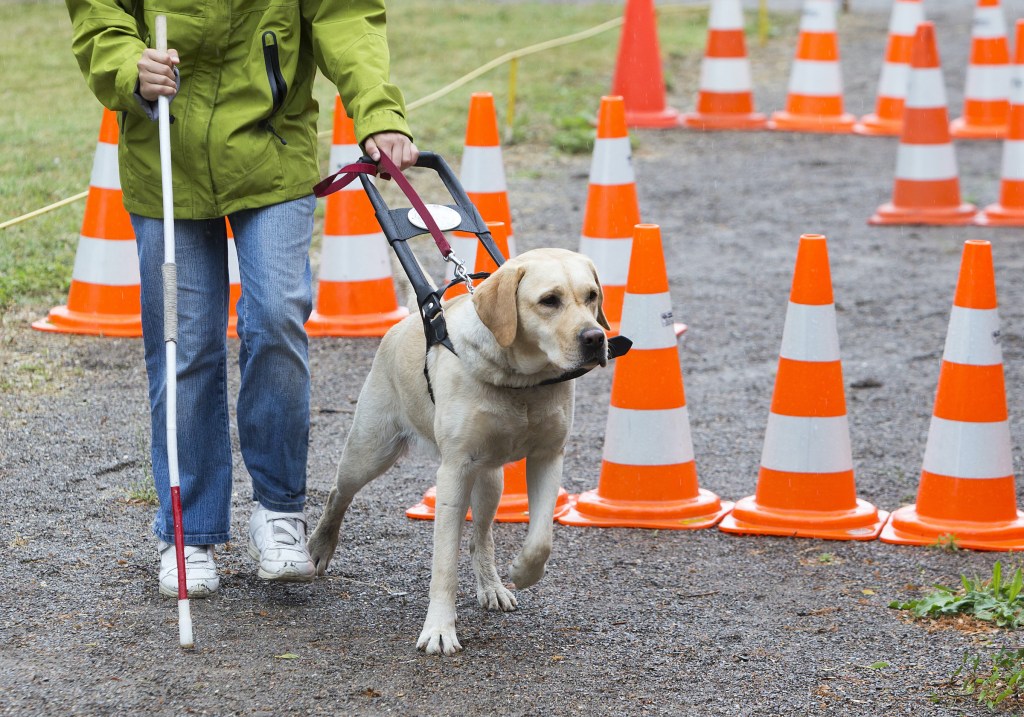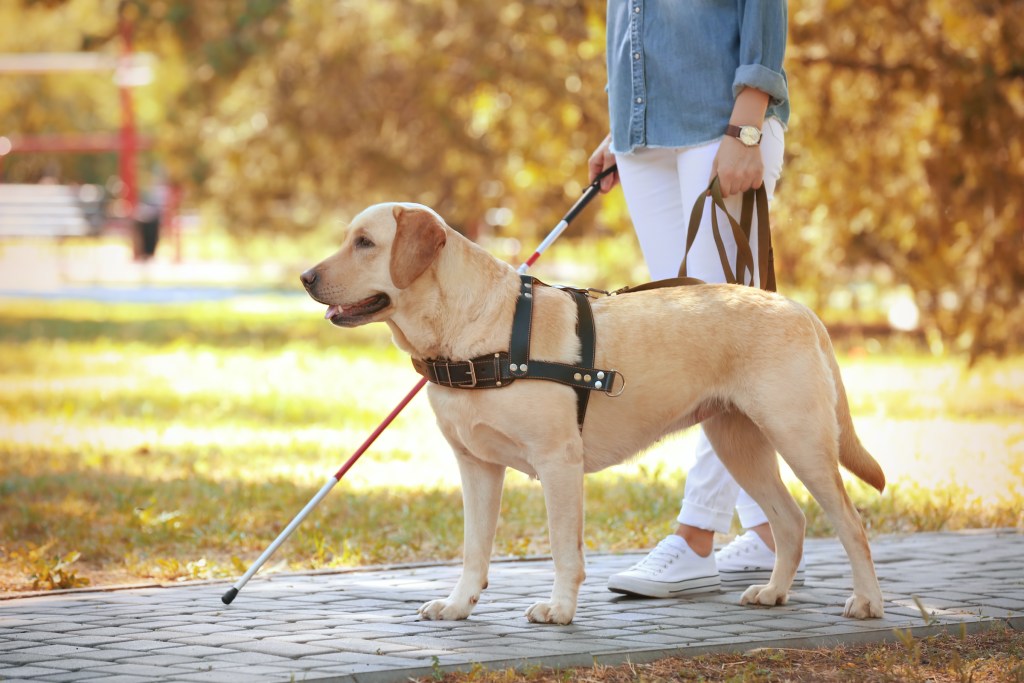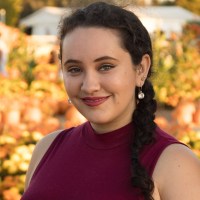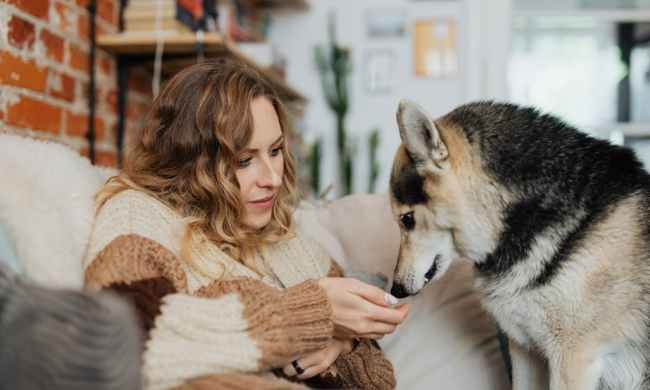Every dog is special in their own way, whether they can bark the words “I love you,” take the world’s longest naps, or help seeing-impaired folks get around. Guide dogs are especially skilled pups who have had months if not years of practice to prepare to care for their person — but what exactly goes into guide dog training?
Training a service animal is different from training a pet, and it varies depending on the dog’s skills and behaviors as well as the special job they’ve been assigned. There are hearing dogs, psychiatric service dogs, mobility assistance dogs, and, of course, guide dogs for those who struggle with sight. These are just a few types of jobs a trained pup can do, but this article focuses on guide dogs, specifically. With such a huge responsibility resting in their paws, how do they do it?
How long does it take for a puppy to become a guide dog?
Many steps stand between a pup and their potential job as a guide dog. Not every puppy who’s bred for service even gets to the socialization stage, where they spend the first year or so of their life with a volunteer puppy raiser (dream job alert!) who teaches them basic obedience. According to Industries for the Blind and Visually Impaired (IBVI), only 50% of pups move on to formal training, which begins around 15 months of age. Of those who do make it, the graduation rate from that program is about 72%.

How are guide dogs trained?
Guide Dogs of America, a leading program for the raising and training of service dogs, trains their pups with a balance of positive reinforcement (including clicker training) and canine decision making. Early training consists of more structured obedience where the dogs learn the basics of guiding visually impaired people, including:
- Safely and confidently traveling from one destination to the next
- Stopping at changes in elevation
- Avoiding obstacles in their path
Later training involves more independence for the dog to help them practice making real-time decisions. When escorting their human, guide dogs need to make split-second choices to keep everyone safe, so trainers are always around to reinforce a dog’s good decision and help steer them away from the bad ones. Once a guide dog finds their perfect fit, they’ll go through another month of training with their new owner, officially called a handler.
Who trains guide dogs?
The person who raises a guide dog puppy is usually not the same one who trains them. After spending their puppyhood learning social cues and basic obedience with the volunteer who raised them, they’ll graduate to the official guide dog school. This advanced training happens with the organization that later connects them to their future families.
According to Seeing Eye, one of the leading nonprofits for guide dogs, trainers have completed not only college degrees but three years of on-the-job learning as well. Trainers have to be patient, physically fit, and highly attuned to the dog’s body language and behavior.

How can you become a guide dog trainer?
If training guide dogs for visually impaired people piques your interest, you’ve got plenty of resources to help you find out more. To give you an idea of what it takes to work your way up, these are just a few of the steps mentioned by Guide Dogs of America: undergoing a three-year “apprenticeship” onsite, meeting all International Guide Dog Federation (IGDF) standards, completing the company’s additional training and evaluation, and completing annual refresher workshops to keep the knowledge up to date.
What to know before volunteering as a guide dog trainer
If you’re considering work as a guide dog trainer, be aware of all the time and effort it will take before you can begin. Meeting the standards of both the IGDF and the company you work with may require earning certain certifications or going back to school. It’s also important that you’re in good health for a job like this, since you’ll be handling large animals in a variety of situations, including poor weather and high-stress moments.
Many prefer instead volunteering to raise a guide dog puppy, which is a huge commitment in itself. Not only do you get to spend a year with a floppy furry baby, but you also get to make a difference in someone’s life! Raising a pup still requires that you attend regular meetings and outings with the other puppies, both to help you stay accountable and to help the dog get used to unusual situations.
Everyone involved in the raising of a guide dog, from puppyhood to graduation, gets to be part of something amazing — and adorable! Whether you raise a pup, train a young dog, or support a nonprofit through donation, you’re helping connect these supertalented canines with people who can live limitless, free lives with the aid of a dog. Training may be extensive and time-consuming, but the benefits are oh-so-beautiful.



